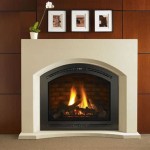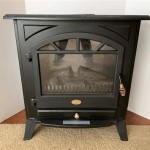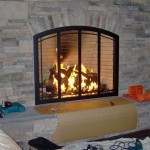How To Make A Wood Beam Fireplace Mantel
A wood beam fireplace mantel adds a touch of rustic charm and natural beauty to any living space. It can serve as a focal point, enhancing the visual appeal of the fireplace and providing a platform for displaying decorative items. Constructing a wood beam mantel is a manageable DIY project that, with careful planning and execution, can significantly elevate the interior design of a home. The following guide outlines the process, providing instructions and insights to ensure a successful outcome.
Before commencing the project, it is crucial to consider the overall design aesthetic and the existing architectural style of the room. A reclaimed beam with visible imperfections and character might suit a farmhouse or industrial-inspired space, while a smoother, more refined beam could be better suited for a contemporary or traditional setting. The dimensions of the fireplace opening and the surrounding wall space should also be carefully measured to determine the appropriate length and depth of the mantel. Furthermore, local building codes and fire safety regulations must be consulted to ensure compliance. These codes often dictate the minimum clearance required between the mantel and the fireplace opening, as well as any restrictions on the types of materials that can be used.
Selecting the Wood Beam
The selection of the wood beam is a critical step in the mantel construction process. The type of wood, its size, and its condition will all influence the final appearance and structural integrity of the mantel. Common wood choices include pine, oak, cedar, and reclaimed wood. Pine is a relatively inexpensive and readily available option, but it is also a softer wood and may be more prone to dents and scratches. Oak is a harder and more durable wood, offering greater resistance to wear and tear. Cedar is naturally resistant to rot and insects, making it a suitable choice for areas with high humidity. Reclaimed wood offers a unique and characterful aesthetic, but it may require more preparation and treatment to ensure its structural soundness.
The size of the beam should be proportionate to the size of the fireplace and the surrounding wall space. A beam that is too small will appear insignificant, while a beam that is too large will overwhelm the space. A general guideline is to choose a beam that is at least 6 inches in height and 6 inches in depth. The length of the beam should extend at least 6 inches beyond the fireplace opening on each side. The condition of the wood should also be carefully assessed. Look for signs of rot, insect infestation, or significant cracking. If the wood is rough or uneven, it may require sanding and planing to achieve a smooth and even surface.
Preparing the Wood Beam
Once the wood beam has been selected, it must be properly prepared before installation. This process typically involves cleaning, sanding, and applying a finish. Start by removing any dirt, dust, or debris from the surface of the beam. A stiff brush or vacuum cleaner can be used for this purpose. If the beam is heavily soiled, it may be necessary to wash it with soap and water. Allow the beam to dry completely before proceeding to the next step.
Sanding is essential for creating a smooth and even surface, especially if the beam is rough or uneven. Start with a coarse-grit sandpaper (e.g., 80-grit) to remove any major imperfections, then gradually move to finer grits (e.g., 120-grit and 220-grit) to achieve a smooth finish. Sand in the direction of the wood grain to avoid scratching the surface. After sanding, remove any sanding dust with a tack cloth.
The final step in preparing the wood beam is to apply a finish. This will protect the wood from moisture, scratches, and other damage, and it will also enhance its natural beauty. Common finish options include stain, varnish, polyurethane, and oil-based finishes. Stain can be used to change the color of the wood, while varnish and polyurethane provide a clear protective coating. Oil-based finishes penetrate the wood and provide a natural look and feel. Follow the manufacturer's instructions for applying the chosen finish. Allow the finish to dry completely before proceeding to the installation step.
Installing the Wood Beam
The installation of the wood beam mantel requires careful planning and execution to ensure its stability and safety. Several methods can be used to attach the beam to the fireplace wall, including using brackets, ledger boards, or a combination of both. The choice of method will depend on the weight of the beam, the type of wall material, and the desired aesthetic.
Using brackets is a simple and effective method for installing a lighter-weight beam. The brackets are typically made of metal and are attached to the wall using screws or bolts. The beam is then placed on top of the brackets and secured with screws or nails. Ensure to use heavy-duty brackets designed for supporting the weight of the beam. Ledger boards provide a more substantial support system for heavier beams. A ledger board is a piece of wood that is attached to the wall and acts as a shelf for the beam to rest on. The ledger board is typically attached to the wall studs using screws or bolts. The beam is then placed on top of the ledger board and secured with screws or nails.
Regardless of the chosen method, it is crucial to ensure that the beam is level and securely attached to the wall. Use a level to check the alignment of the beam and make any necessary adjustments. Regularly inspect the mantel for any signs of loosening or instability. Promptly address any issues to prevent accidents or damage.

Quick Wood Beam Mantel Diy Project Barron Designs

Diy Wood Beam Mantel

Simple European Farmhouse Barn Beam Fireplace Mantel Makeover Open Doors Hearts

Wood Beam Mantel Diy For Under 30 Fireplace Makeover

Diy Fireplace Beam Mantel

Diy Wood Beam Mantel

Easy Diy Fireplace Mantel Tutorial Jessica Welling Interiors

Diy Wood Mantel Simple To Make Artsy Rule

Diy Rustic Fireplace Mantel The Cure For A Boring

Diy Wood Beam Mantel








